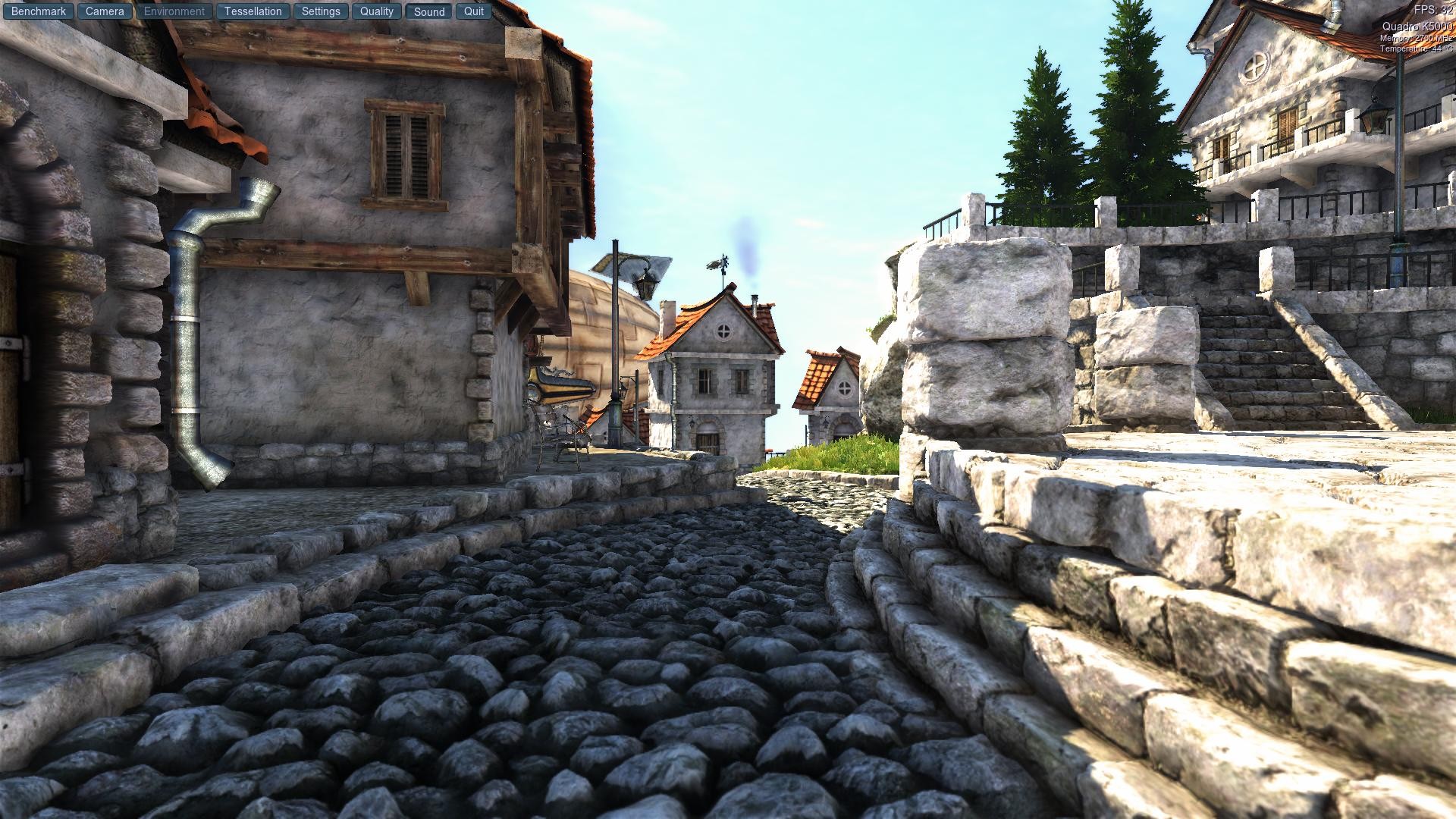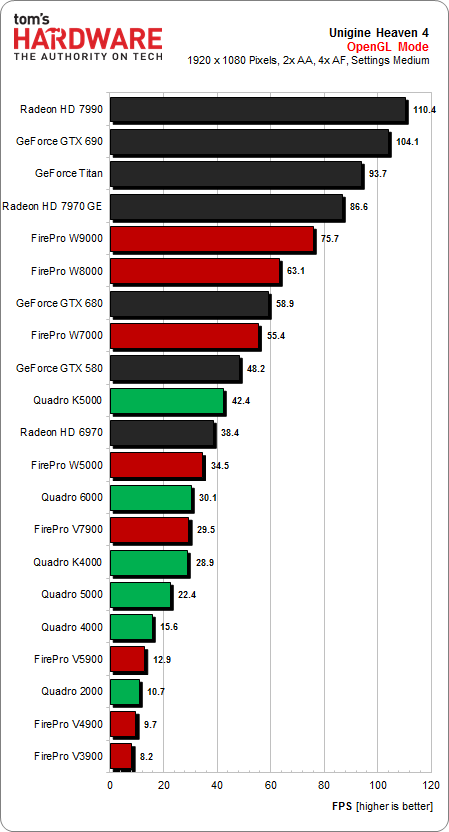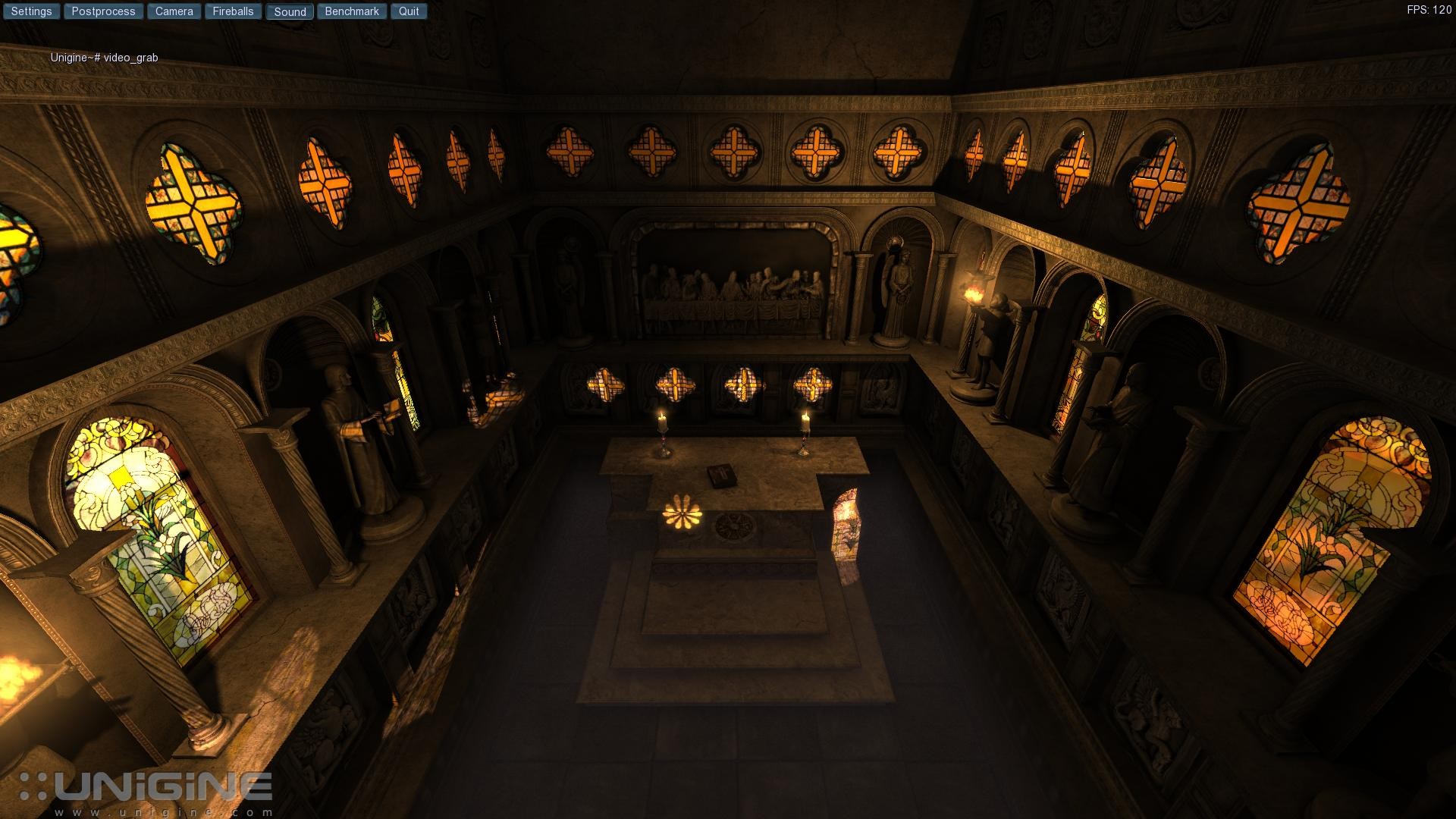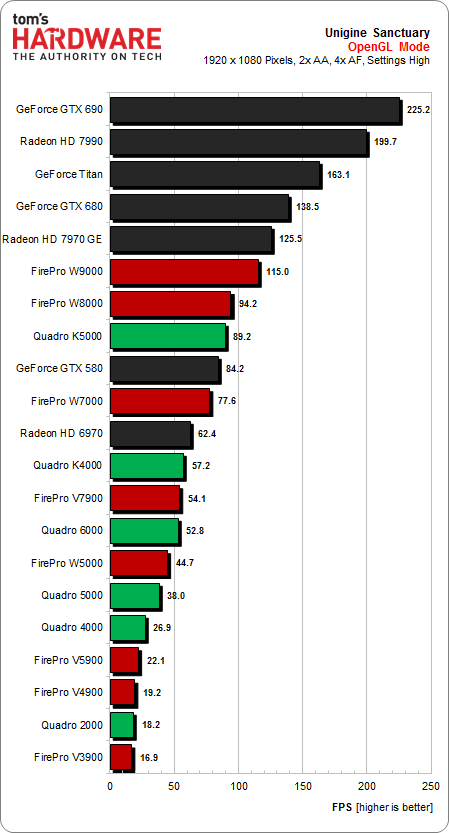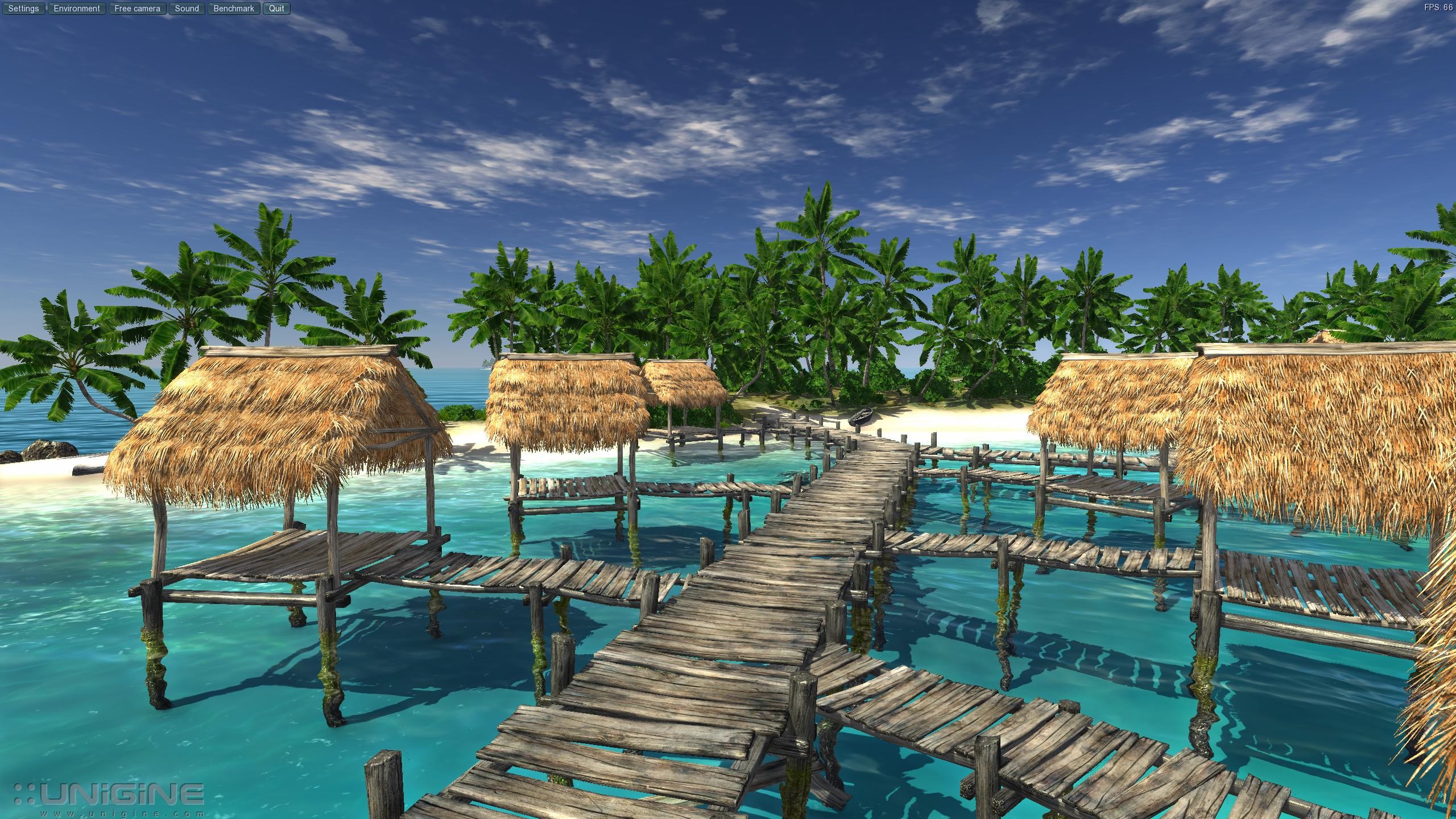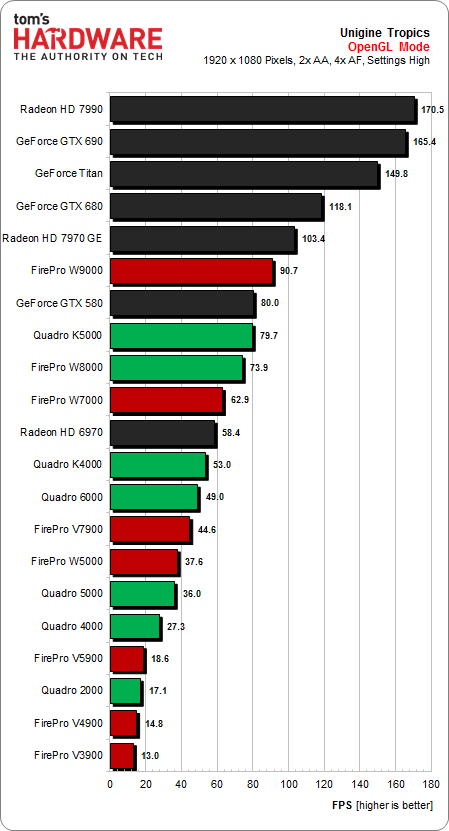Workstation Graphics: 14 FirePro And Quadro Cards
We put 14 professional and seven gaming graphics cards from two generations through a number of workstation, general-purpose computing, and synthetic applications. By the end of our nearly 70 charts, you should know which board is right for your workload.
OpenGL Synthetic: Unigine Heaven, Sanctuary, And Tropics
The Unigine benchmarks are popular for their ability to help assess gaming performance in a synthetic DirectX 11 test. We use the OpenGL render path instead of DirectX, though, to see how these workstation-class cards do.
Drivers Used
| Driver | Nvidia | AMD |
|---|---|---|
| Workstation | 311.35 | Catalyst Pro 9.003.3.3 |
| Gaming | 314.22 | Catalyst 13.3 Beta 3Catalyst 13.5 Beta 2 (Radeon HD 7990) |
Unigine Heaven 4.0
Unigine Heaven's claim to fame started with the introduction of DirectX 11, and it quickly became a standard benchmark for evaluating tessellation performance. Currently it's in version 4.0, emphasizing the following features (taken from Unigine’s website):
- Comprehensive use of hardware tessellation, with adjustable settings
- Dynamic sky with volumetric clouds and tweakable day/night cycle
- Real-time global illumination and screen-space ambient occlusion
- Cinematic and interactive fly/walk-through camera modes
That the gaming cards do well in Heaven doesn't come as much of a surprise, despite the OpenGL render path. The workstation cards can’t lean on their driver optimizations to push them ahead, effectively leveling the playing field. Looking at cards like the FirePro W7000 and Quadro K4000, it becomes very clear how far ahead AMD's hardware is compared to Nvidia's, and just how much Nvidia is able to do with its drivers.
Unigine Sanctuary
The second Unigine benchmark puts its emphasis on somewhat different features (taken from Unigine’s website):
Get Tom's Hardware's best news and in-depth reviews, straight to your inbox.
- Five dynamic lights
- HDR rendering
- Parallax occlusion mapping
- Ambient occlusion mapping
- Translucence
- Volumetric light and fog
- Particle systems
- Post-processing
These benchmark results are very similar to what we say in Heaven 4.0. One notable difference is that the top two graphics cards trade places.
Unigine Tropics
The last Unigine benchmark still sports OpenGL and lots of bright colors, but emphasizes different features. Again, taken from Unigine’s website:
- Dynamic sky with light scattering
- Live water with a surf zone and caustics
- Special materials for vegetation
- HDR rendering
- Parallel split shadow map
- Depth of field
- Real-time ambient occlusion
- Up to 2M polygons per frame
- Simulation of changing light conditions
In spite of the somewhat older engine and different emphasis, we’re faced with a familiar picture. Even though the FirePro W7000’s direct competitor in the professional space is Nvidia's Quadro K4000, the three Unigine benchmarks place it closer to the Quadro K5000. Hopefully AMD is paying attention to how much performance potential it's missing out on as a result of its drivers. The W7000 clearly plays host to more horsepower than some of the professional applications (or its price) would have us believe. This is a missed opportunity for AMD.
Current page: OpenGL Synthetic: Unigine Heaven, Sanctuary, And Tropics
Prev Page SPECviewperf 11: TCVIS And SNX Results Next Page OpenGL Synthetic: GPU Caps Viewer PostFX
Igor Wallossek wrote a wide variety of hardware articles for Tom's Hardware, with a strong focus on technical analysis and in-depth reviews. His contributions have spanned a broad spectrum of PC components, including GPUs, CPUs, workstations, and PC builds. His insightful articles provide readers with detailed knowledge to make informed decisions in the ever-evolving tech landscape
